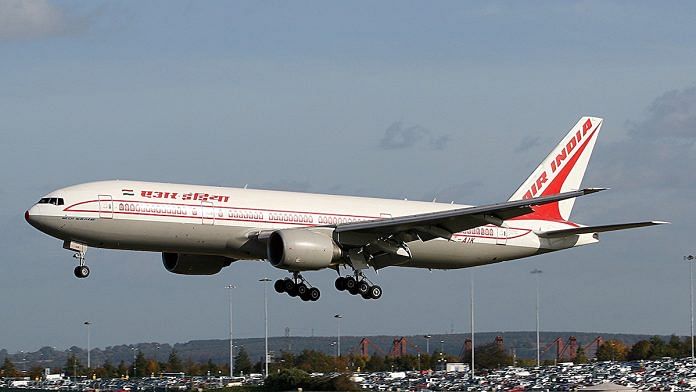New Delhi: The Narendra Modi government is confident about the success of its second attempt to sell debt-ridden flag carrier Air India, the details of which were announced Monday.
Driving the optimism is the fact that the fresh offer addresses the concerns raised about the first bid, which was made in 2018 and failed to elicit much enthusiasm.
The offer this time includes a 100 per cent stake sale with management control and fixed debt retention. It also comes at a time when there’s political certainty for an investor because the current government still has four years of its tenure left.
The 2018 offer sought buyers for a 76 per cent stake in Air India and came on the threshold of an election year. There was also much uncertainty about the amount of debt the buyer would have to take over.
The central government Monday floated a preliminary information memorandum to invite expressions of interest from potential buyers for the flag carrier. Also on offer are Air India’s stakes in its two subsidiaries — the budget carrier Air India Express (100 per cent) and Air India SATS Airport Services Private Limited (50 per cent), which handles ground operations.
The government said it was hopeful of completing the first phase of shortlisting buyers by 31 March, after which financial bids would be invited and the buyer finalised.
Air India has been incurring losses for the last few years and has seen its accumulated debt zoom to Rs 60,000 crore.
“Air India’s financial position is fragile. It is under a debt trap. A private buyer can bring in operational and financial efficiencies,” said Civil Aviation Minister Hardeep Singh Puri at a press conference Monday. “We hope and wish Air India remains a vibrant airline and flies forever.”
Also Read: Air India begins to polish its image in its quest for elusive buyers
The new terms for the buyer
The government will sell its entire 100 per cent stake in India along with management control this time around. In 2018, it had attempted to retain a 24 per cent stake, raising concerns among investors about government interference.
The government also proposes to only keep a debt of Rs 23,000 crore on the books of Air India. The remaining debt, and assets worth Rs 19,000 crore, including real estate owned by Air India, will be transferred to the holding company, a special purpose vehicle of the carrier.
In 2018, the government had proposed to transfer a debt of Rs 29,000 crore out of Air India’s books, but the investors were plagued with uncertainty on the share of debt they would have to bear.
Tuhin Kanta Pandey, secretary in the department of investment and public asset management, explained the government’s rationale in reducing the debt burden of Air India and transferring some of the debt to the holding company that will remain with the government.
He said the government was conscious of the fact that Air India’s debt on account of accumulated losses had to be taken off the books of the carrier to ensure it remains a viable operational entity.
The timing of the sale is also better this time, according to the government, which has conducted eight road shows to gauge investor interest and understand their concerns.
“In 2018, we were heading into general elections. The civil servants and political leadership remained cautious. The external environment was also not conducive at that time,” Puri said at the press meet, adding that the government is confident of a successful sale this time.
The sale process has been approved by a panel headed by Home Minister Amit Shah, Puri added, dismissing concerns raised by BJP leader Subramanian Swamy about the sale.
The failure of the first bid
In an interaction during ThePrint’s Off the Cuff in October 2018, former minister of state for civil aviation Jayant Sinha had explained the government’s understanding of what went wrong in 2018.
He pointed out that it took over a year to prepare Air India for sale, including separating core and non-core assets and dealing with balance sheets.
However, by the time Air India was put up for sale, a weak rupee and higher oil prices made the operating environment difficult for other buyers. “All airlines are dealing with adverse pressures, so under the circumstances, to expect the privatisation to go through, I think was a tough call,” he had said.
What happens to the employees?
Air India has more than 9,400 permanent employees and 4,200 contractual workers. In the information memorandum released Monday, the government noted that more than 36 per cent of the permanent employees will retire in the next five years.
When asked about the future of the employees, Air India chairman Ashwani Lohani said the airline didn’t have excess employees.
Puri added that the airline had the world’s finest engineers, pilots, and cabin crew who were familiar with the operations. “Why would a buyer not wish to retain them?” he added.
The government is contemplating a lock-in period for the buyer to maintain a status quo when it comes to employees.
Also Read: Air India’s ‘great offer’, the ‘poha test’ and no ‘jan ki baat’




Ideally, the government should hive off all businesses, unless they are of strategic relevance. Then at least, throwing good money after bad money for keeping this white elephants will end. Government’s business is to govern, not to engage in trading etc.